Ed’s note: With the Hardrock 100 set to kick off Friday morning, crew member, friend and writer Tim Mutrie thought it would be cool to share an interview he did with the 2008 winner and current course record holder, Kyle Skaggs.
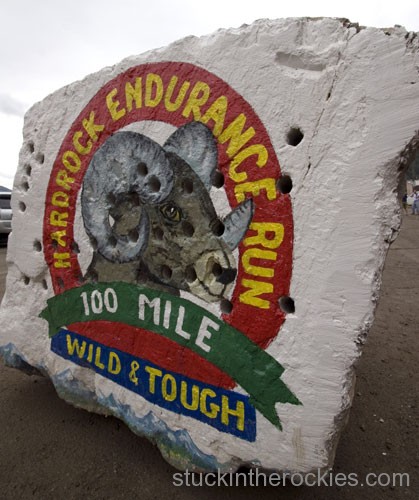
In the wake of Kyle Skaggs’ annihilation of the Hardrock 100, almost two years ago, there were a few folks in Aspen (and elsewhere, no doubt) who were damned curious to know how he did it. What the 23-year-old Skaggs did was stage a tour-de-force on the undisputed toughest/baddest/insanest ultra course in North America, finishing in 23 hours, 23 minutes. For context, that put Skaggs six-plus hours ahead the runner-up and two hours and 45 minutes in front of ultra-running legend Scott Jurek’s course record, established the previous year in ’07.
Said observers (Ted, Christy, me, etc.) were stunned. An analysis of Skaggs’ split times (results, in pdf) and an article in the next day’s Durango Herald provided some insights into the blockbuster run… but we wanted more, more meat. I also thought it would make a good story for me to, you know, write about. So I tracked down Skaggs’ digits via a PR rep from New Balance and eventually made plans with him to talk. We ended up talking for quite a while, with Skaggs going into candid detail about his life and how this race had sort of intersected it and overtaken it, object-of-obsession style.
I never managed to sell the story to places like the New York Times or Outside, but I tried. I still think it’s their loss. More surprisingly, to me, is that the stuff covered in this Skaggs interview hasn’t really been reported anywhere since, which is weird and also too bad because it’s pretty freaking interesting. Fitting then to unearth the interview now, the eve of the 2010 Hardrock 100 (in which Skaggs will not be competing) and the first clockwise course orientation since Skaggs blew that s%$# up in July 2008. Roll tape: the July 30th, 2008 “lost” interview:
So you’re living in Silverton? “Yeah, pretty much. I usually spend May through September here; the last three years I’ve done that, anyway … doing ecology work in high alpine lakes, with the Mountain Studies Institute.”
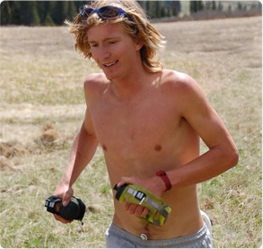
You’ve got a 505 cell number—New Mexican connection? “We grew up in southwestern New Mexico; a tiny town called Glenwood.”
When did you begin sprinting up and down mountains? “I’d run around a bit growing up, but my high school was so tiny we didn’t have a cross country program. And, I wasn’t into track.”
When did you start running for reals? “I went to Evergreen College, in Washington. I had a buddy who ran, but I was doing a lot of climbing then. It was like, ‘Well damn, it’d be a good challenge to try and run with the team.’ And so I ran cross-country, starting my sophomore year. That’s where I got started.”
“I wasn’t our top runner, by any means. But our coach was a huge inspiration; he’d take me running on the hills outside of Olympia. That was my start in trail running and I just loved it. And cross country, itself, was awesome. The camaraderie and the relationships, it was fun. There’s something fun about—as sick as it is—organized cross country practice.”
You excelled at suffering, that sort of thing? “Five miles was the common distance, so pretty damn short. But I just loved going on long runs like we did every Sunday. Then I got in with some local ultra-runners and my coach talked some of us into doing a local 25K trail race. … I loved it. I think I got third—it was a tiny field—but still it was better than [being] middle-of-the-pack cross country.”
Journey-of-a-thousand-miles-begins-with-one-step type deal? “Yep, I started running in the Cascades a lot. Then I just started doing long runs; anything that looked good. I was climbing a lot at the time, so I’d always push for climbing a peak in there, or some kind of traverse—lots of good adventure runs.”
At what point did the race called the Hardrock 100 come onto your radar? “I’d heard about [ultra] races, like the Cascade Crest [100 miler]. But Hardrock was really the first big one that got my attention. My buddy, James, who’d I go running with, he was just psyched on the Hardrock. We’d always be doing mountain stuff together anyway, so his interest ended up being what I got interested in.”
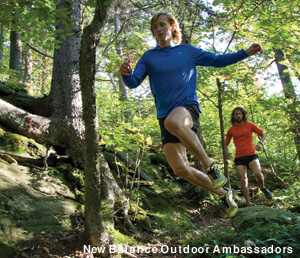
The Hardrock. Nice segue. So you graduated from Evergreen and then applied yourself to the Hardrock? “Technically, there’s not ‘degrees,’ but I studied enviro science and aquatic ecology [Bachelor of Science, 2006], and the summer right after I graduated I came here [to Silverton].”
“In 2006, that [race] day I had to work—well, for part of that day. I’d run with Nate McDowell and Karl Meltzer a few times before the race because they were here training. … The first time I met Karl was here in the coffee shop.”
Duo espresso. “I was super into the race, so I was super bummed that I had to work that day. But I definitely watched the start and anytime I could get near a computer I was checking it out.”
Karl won that year in 27 hours. “That spring, I’d done my first 50 miler, the Zane Gray 50 in Arizona. It was pretty good—I got second—but I did a really bad job of hydrating and managing my electrolytes. I had to get two IV’s after I finished, so things could’ve gone better.”
Was that your first ultra distance? “In fall of 2006, the Wonderland Trail—it’s a 96 miler, around Mount Rainier.” [Skaggs set the course record.]
“The next year [2007], I tried to get in to Hardrock, but I didn’t get in [via weighted lottery]. I was way down on the wait list, but I was hanging around. …
“Scott Jurek was here and we ran together every day for the month he was here [before the race]. We did a couple 40 milers together. … I ended up pacing Krissy Moehl, who won the women’s race and set a course record. She was third overall, behind Scott and Karl.”
Fast company. “It’s always fun to run with different people. I definitely look up to certain people, but I try not to put anybody way up on a pedestal. I try to think of it as running with friends.”
Right. Until it’s a race and you break out the duster. Wasatch Front, for example. “Last year I ran a bunch. Let’s see, I won three 50Ks and two 50 milers, so even going into Wasatch, I was sort of favored. Still, I’d never run—technically—a hundred miles, so that’s a big unknown for sure.”
And, bingo, a new course record (19:35) [since broken]. “I hadn’t run the course before, so I was coming in [at the end] and my brother was pacing me and we’re just bombing it, probably faster than a 6:30 pace. I knew there’s pavement at the end, and we had something like 13 minutes to beat the course record, so we’re pushing hard but we didn’t think we had the course record…”
The previous course record belonged to Karl of course. And he wasn’t running that time. “We actually stayed at Karl’s house for the week before the race, which was nice. … He was super congratulatory.”
No hard feelings? “I don’t think so. It’s always hard to see one of your records fall, but that’s what the sport’s about, and overall everyone’s really supportive of each other. Karl’s definitely that way.”
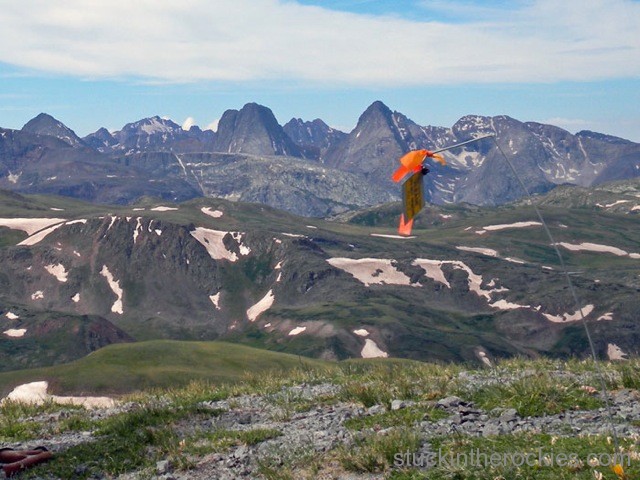
So you got into Hardrock for 2008? “Sixth on the wait list. … So I was basically in. [Laughter] I ended up doing eight ultras or something: won a 35-miler race in Moab in February, then a 50 miler in New Mexico in mid May (Jemez Mountains race), then to Grand Canyon and we spent two weeks running the Canyon in the end of April, and Scott came down.”
“I used to have the double crossing record, but somebody broke it. … It’s totally an honor system. But people know. Only certain people are capable of doing it. … But it got too hot for us to try and do it. Prime time is November because it hasn’t started snowing yet, but it’s getting cooler.”
When did you pull back into Silverton? “Two months before the race, end of April. It was pretty rough at first because there was a ton of snow here. I was running whatever dirt was open. I actually ran 30 miles on pavement one day. But as soon as they started plowing the small pass roads, I’d run those. And as soon as any trail would open up, I’d get on it. And, I just ran on top of a lot of snow. You just have to get up early in the morning while it’s still hard (like a climb of Kendall Mountain).”
Longest training run? “I ran the last 42 miles of the course, probably three weeks out.”
Weekly mileage? “It changes. It’d been pretty steady since after Wasatch, running everyday, not missing a day, and most weeks over a 100 for sure… But in the month before the race, I was over 140 all the time, and probably threw in a 150, a 160, four and three weeks out probably. Maybe not though, maybe only one week I hit 150.”
How’d you feel going into the start then? “I knew I was really well prepared and that’s nice having that confidence. But there’s definitely a lot of pressure. Everyone was expecting me to win. And I don’t necessarily like going in with that kind of presumption. I tried to look at like, ‘I’ve run these trails so many times, it’s just like going out my door any other day.’”
“And I wore what I’ll always wear. And I didn’t have any planned split [times]. ‘Run hard and at a pace that can be maintained.’ But I knew what Karl had run, and where I was in relation to what his [split] times had been. But I just didn’t want to put the pressure on where if I missed a split then I’d get stressed out, like my race is going poorly.”
“Using somebody else’s splits from previous year, you just never know. Maybe they’d just stopped and took a shit for 10 minutes. … But I actually ended up running it faster than I had in training, which wasn’t as planned.”
Watching online it appeared that either, A.) You were gonna blow up. Or, B.), You were gonna blow it up. Thoughts? “That’s what I was thinking. [Laughter] I knew I was going significantly faster than it’d been run before, but I didn’t know what was going to happen in the last 40 miles. So you just keep pushing. But there’s a big uncertainty, Am I going to blow up?”
“Pretty much everybody always tells you, ‘Yeah, you’re doing great.’ That’s the stock comment. So it’s hard to get honest answers from people at aid stations. But my crew, they kept it real, they’re all experienced runners. … The approach is, Just go out and hang on. And as long as you can hang on, keep hanging on.”
Food, hydration tactics? “You just get in the zone. A friend was saying [to me], you’d come into the aid stations and not show any emotion. … Just eating gels the whole time. I think I ate one peanut butter and jelly, but the gels are the standard. I know how they’ll affect me. And then just water; nothing else. I’ll fill up right out of the creeks, not treat it or anything. It’s faster than aid stations. Then S Tabs, made by Succeed, for electrolytes. It’s just like a pill.”
Sweating profusely. Or, nary a bead? “Yeah definitely, I was definitely sweating, and definitely near Ouray.”
Advil? EPO? PED? What? Anything? “I don’t take anything while I’m running. I just don’t need it. I think keeping it simple is fine. And I didn’t have any major stomach issues or anything. And as far as Advil, I wasn’t in that much pain. It’s all controllable, mentally, I think.”
There are two H20 camps in ultra-ing: The water bottle camp and then the Camelback camp. What camp are you? “Bottles. I feel it’s a lot easier to fill in creeks, basically. You can’t really fill a Camelback in a creek—fast. I pretty much carried one bottle the whole time. I can just stick that in the back of my shorts if I want, so hands free.”
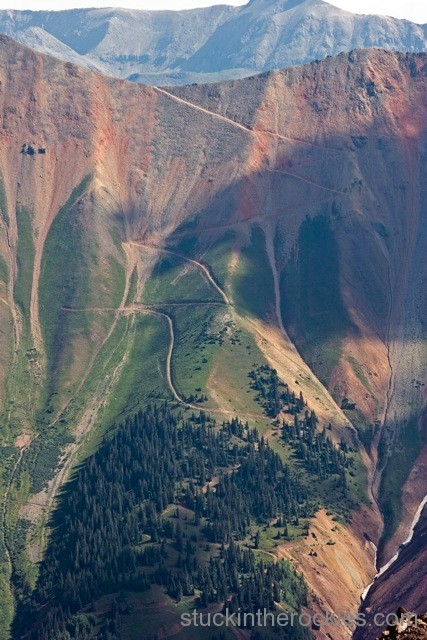
Right. Keep it simple, no hands and everything. “People would think I’m an idiot. Basically I’d carry one bottle, some gels and a lightweight shell—because you never know in the San Juans. But I’d use the shell as a pack too, and that way I didn’t need a pack.”
“You really don’t need that much stuff, when it comes down to it, when it’s a race, when it’s supported… maybe if you did that on a training run, you’d be an idiot. But a race is a different story.”
Giardia? “Yes. Got it in the northwest. And I never treated it. I’m probably still a carrier.”
Shoes? “Same pair the whole time. A [New Balance] trail shoe, the 790, really light weight, 7.5 ounces. … The ones I’m wearing are custom made, so sort of a prototype. They were pretty much trashed at the end, but a 7.5 ounce shoe and it took pretty much the roughest terrain you can run through.”
What happened to the shoes—trash, Hall of Fame, Telluride Free Box, homeless guy, what? “New Balance got ’em.”
Change socks much? “No. And I think that would’ve been a mistake to not use socks; just super thin, low cut socks.”
Do you subscribe to the Vaseline foot slathering trick? “No. I just haven’t ever really had problems. I don’t think I got any blisters really.”
Shirt and shorts? “I had the shirt on on or off depending on how I was feeling, and during the night I had a long sleeve shirt with me too. … Three and a half inch inseam shorts. They’re short-short for sure. You wouldn’t really want to wear ‘em out on the town.”
Time spent in aid stations? “Tried to minimize that; pretty much every minute is wasted time. Even if you spend a minute, if there’s someone in front of you, you have to run that much faster to catch up. It takes chunks out of your time.”
Could the race have gone better for you? “No, I was pretty psyched. People are like, ‘Did you know you were going under 24?’ No, but I knew it was possible and I just wanted to go out and go as fast as I could.”
Pacer? “Nate McDowell went 42 miles with me, to the finish. He’s a good friend. I maintained the pace for sure, I like to be in control of that. So I was in front always, but he was good at giving advice and encouragement. Mostly, I just like to have some company. He did most of the talking, I’d grunt occasionally.”
Uhhh, uhhh. Ipod? “Definitely not.” [Skaggs doesn’t own one.]
But you do have a cell phone? “That’s my only real electronic device. And it’s pretty shitty. It has to be plugged in, so it’s almost not a cell phone.”
Do you live in a tipi too? “Rent a room in a house in Silverton. … I can fit everything I have here into my car. Which is nice. I don’t need a lot and spend most of my free time running. I don’t have a TV, definitely don’t have a computer, so keep it simple. And that’s also something that’s really appealing to me about running, especially coming from climbing. All I need to go out and have an adventure is a pair of shoes and maybe some gels.”
“I guess I do have a ton of shoes. They probably take up the most space in my car.”
Car? “Old Toyota station wagon. … I try to run right from the house a lot. But if it goes anywhere, it’s going to the trailhead.”
All part of the job… monitoring high alpine lakes. “Some is steep, but not ever very far. I do enjoy it, but I don’t consider it training.”
Some people think you’re young to be dominating in the ultra realm. On the other hand, maybe it’s just that not too many young dudes/gals have applied themselves to it. “Some people are surprised; 23 is definitely younger than most folks. But I don’t pick up too much on other folks’ opinions about it.”
Dudes at Hardrock look more 1989 ZZ Top concert meets 1834 mountain man fur-trading rendezvous rather than, say, track meet. “If you just look around at Hardrock, these guys use their gear. The stuff’s been used. You can tell they’re a bunch of rugged dudes.”
Is this your greatest achievement? “Definitely. It’s just a way bigger goal. Hardrock was a goal before Wasatch and it’s been on my mind for more than three years. I trained a lot harder for it, mentally and physically, and it went well.”
What’s next? “I took one day off after [the race]. And now I’ve got some tendonitis going on, so I’m waiting it out until it’s totally pain free. But right now I don’t have an immediate goal. I’m pretty satisfied. I’m in for Wasatch, but what is it now? It’s five and-a-half weeks away, and it just doesn’t feel… [Skaggs did not start the Wasatch.]
“Maybe some cross-country work outs. It helps keep the ego in check to just get annihilated by some really fast guys.”
Hard act to follow too. “It’s hard because Hardrock is something I’d just been dreaming about. But now things are feeling a little anticlimactic, or hard to get as psyched on, but I’m sure that’ll come around. There’s lots of great races out there. … The race around Mt. Blanc is appealing.”
Sponsors? “New Balance is great, excellent, and that’s pretty much all I want right now. I clearly don’t need a lot of stuff, right? And I’m not into repping some product I don’t have a need for. Other than that, I do eat gels and I get stuff from Clif, and that’s all I really need: gels and shoes.”
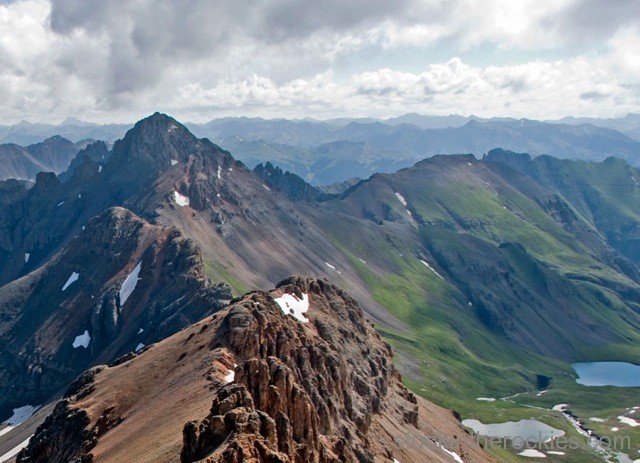
OK, so some friends and I are seriously wondering about one more thing: Just how fast are you running down some of these super-steep descents? Like skipping along, bunny rabbit style, or all out steeplechase-sprinter Niagara-Falls-in-a-barrel style? “The really steep stuff I go down fast. I run in the mountains a lot, I’m fine with that. But the gentle downhills, I wasn’t forcing anything, I was just sort of coasting, saving energy. But the really steep stuff I can go down pretty quick. Most of the time, the terrain dictates what sort of pace you should be going.”
OK, Grant Swamp Pass. That’s so steep and loose it doesn’t even really support a discernible trail. What were you doing down that? “I was just bombing down that scree. I was disappointed there wasn’t snow to glissade down. Instead, it was just scree skiing.”
—————————————————————————————
EPILOGUE
I spoke with Skaggs a few more times, most recently prior to the 2009 Hardrock. Skaggs told me he wasn’t going to be racing, and that he’d been running mostly cross-country type workouts. This week, I tried calling him again to check in. His number wasn’t working anymore, so I dropped him an email, but haven’t heard back.
Meanwhile, the trend in ultra-running continues… to get faster. Karl Meltzer last year, racing the counter-clockwise direction, won in 24:38—just an hour and 15 minutes off Skaggs’ mark while going the direction some observers believe to be slower. Meltzer will be back this year, and maybe what’ll happen is that Skaggs’ mark gets bested and his effort of 2008 just becomes part of the history of a great and obscure race. Or maybe not. Maybe it was one for the ages.
—Tim Mutrie

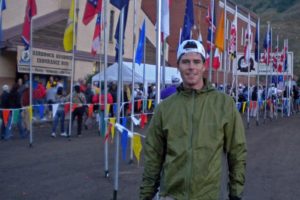
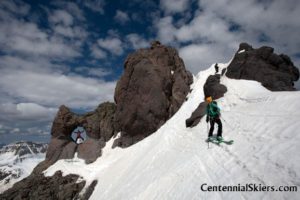
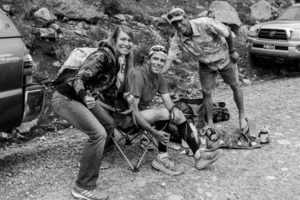
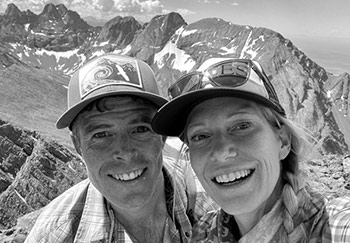






14 Comments
Leave your reply.